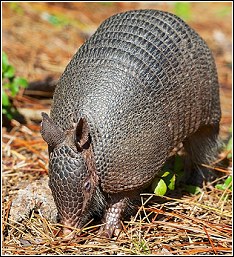Translocation Of Nine-banded Armadillos
A study conducted by the Warnell School of Forestry and Natural Resources, University of Georgia.
The study followed the survival and movement of 12 translocated armadillos in the Southeastern United States after the
armadillos had been equipped with radio transmitter tracking devices.
Contents
Synopsis
Once an armadillo has decided to take up residence, their foraging, burrowing and feeding habits can lead to lawn, crop and landscaping damage around the related property. In an attempt to solve the problem, property owners often choose to relocate the troublesome animal.
This study conducted in Georgia, looks at the effects of translocation on six out of twelve nine-banded armadillos utilized for the study.
As is often the case with translocated wildlife, the armadillos appeared to have a tendency for movement away from the release location back toward the area where they were first captured.
Overall, 20% of the animals died during the course of the study.

Cape Coral, Fort Myers & Pine Island
Sanibel Island, Captiva, Boca Grande and
surrounding areas in Southwest Florida
Mobile Response #: 239-900-6411
1242 SW Pine Island Rd., Suite 310
Cape Coral, Florida 33991-2126
help@totalwildlifecontrol.com
1242 SW Pine Island Rd., Suite 310
Cape Coral, Florida 33991-2126
help@totalwildlifecontrol.com














